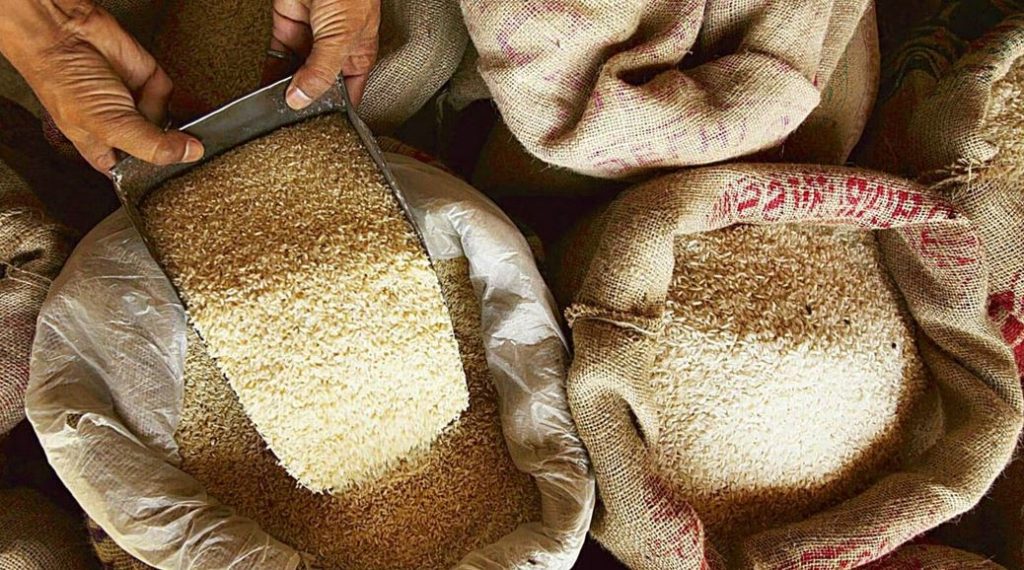Tags
The Cost of Nepal’s Failing Rice Strategy
All of these raise questions over the government’s annual commitments to self-sufficiency in paddy and rice production by boosting local farming. Every year, the government sets a target for increased paddy production, yet the fields utilized for paddy production continue to shrink.

By REPUBLICA
Even as Nepal marked the 22nd National Paddy Day on Sunday, the existing data tells a sad story. Nepal imported paddy and rice worth around Rs 39 billion in the first 11 months of this fiscal year alone. That’s more than Rs 3 billion per month, which could have gone into strengthening local agriculture through the modernization of agriculture foundations. More than 753,000 metric tons of paddy and rice were imported during this period, a sharp rise of Rs 11 billion in value from the same period last year. Also, rice plantation land in Nepal is shrinking, with a decline of 3.04% projected for this year alone. This reduction is driven by a shift towards cash crops, urbanization, infrastructure development, and the abandonment of farmland due to labor shortages and out-migration. Government data indicates a decrease from 1,438,989 hectares last year to 1,395,207 hectares this year. All of these raise questions over the government’s annual commitments to self-sufficiency in paddy and rice production by boosting local farming. Every year, the government sets a target for increased paddy production, yet the fields utilized for paddy production continue to shrink. The shortage of standard seeds and essential fertilizers as well as arable land lying idle in several districts have decreased paddy output over years. Irrigation facilities do not exist or are outdated, and the required support from authorities has fallen short, making the matter worse for paddy farmers.
There is another gaping problem: more Nepalis are eating rice than ever before, but a lesser number of farmers are producing it. The disparity makes our dependence on rice imports even more profound. The figures indicate that in areas like Madhesh, Lumbini, and Koshi, vast tracts are covered by paddy, but even those are not enough to meet the domestic demand. Spring paddy is being promoted to fill the gap of deficit, but it covers only a small fraction of the whole available space. Planting rates in the monsoon season also remain low in several provinces. With each passing year, the mismatch between what we grow and what we eat keeps becoming wider. To reduce import dependency, real work must begin in the field. Productive land must not lie idle. The support from authorities must come on time. Irrigation should cover more arable land, and local governments must prevent farmland from vanishing under urbanization projects. Seeds and fertilizers should reach every farmer when needed, not after the plantation period.
However, farmers are not the only people who should be blamed for dwindling rice yields every year. The consumers can also ease the burden by changing the way they consume daily foods. Our food habits are largely rice-heavy, but if more households opt for indigenously produced millet, maize, barley, buckwheat, and wheat to include them in their major food items, this would ease the burden on rice demands and create demands for a wide range of crops over some years. These grains are cultivated and grown in certain regions where paddy has lesser outputs. Besides our food habit in which rice is a staple item, Nepal’s problem of lower rice yield is related to unfavorable planning, priority, and engagement. We need higher paddy yields through preserving cultivable land, helping farmers, and modernizing our traditional agricultural practices. While we celebrate National Paddy Day, what we need is increased paddy and rice output to suffice our need, which would save billions of rupees we spend on importing rice, which was once abundantly produced in the country.
https://myrepublica.nagariknetwork.com/news/the-cost-of-nepals-failing-rice-strategy-86-74.htmlPublished Date: June 30, 2025






